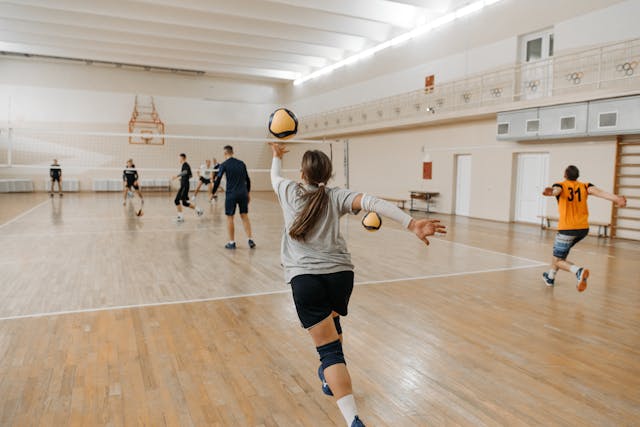 For many, fall is the perfect season for running. As the temperature begins to drop, many runners ramp up their mileage in hopes of achieving personal records. Increased repetitive force from hitting the pavement can put added pressure on the legs and knees, increasing the risk of injury. But runners aren’t the only ones at risk of sustaining leg and knee injuries – lower extremity injuries can occur in people of all ages and walks of life.
For many, fall is the perfect season for running. As the temperature begins to drop, many runners ramp up their mileage in hopes of achieving personal records. Increased repetitive force from hitting the pavement can put added pressure on the legs and knees, increasing the risk of injury. But runners aren’t the only ones at risk of sustaining leg and knee injuries – lower extremity injuries can occur in people of all ages and walks of life.
Below, we discuss five common types of leg and knee injuries, and possible treatment options associated with each condition.
Sprained or Torn Anterior Cruciate Ligament (ACL)
Sprained or torn ACLs are among the most common leg and knee injuries. The ACL is a ligament that runs from the femur to the tibia and helps stabilize the knee. When a person lands incorrectly or changes direction suddenly, that can put pressure on the ACL and cause the ligament to tear or rupture. Unintentional falls or blows to the knee can also cause ACL injuries.
Treatment for ACL injuries varies depending on the severity of the damage. Options may include physical therapy, anti-inflammatories, braces or orthopedic surgery.
Sprained or Torn Medial Collateral Ligament (MCL)
MCL injuries, including torn or sprained MCLs, can occur when twisting, bending or changing direction. If the knee is hit from the side while in a locked position, that can also lead to an MCL injury.
Most MCL injuries can be treated non-surgically using physical therapy or braces. In rare cases, orthopedic surgery may be necessary to fully repair the damage to the collateral ligament.
Torn Meniscus
Meniscus tears are often associated with other knee conditions, including ACL and MCL injuries. When a person turns too quickly, the knee can twist, resulting in a torn meniscus.
Depending on the extent of the tear, nonsurgical treatment such as physical therapy or anti-inflammatory medication may be an option. In some cases, arthroscopy may be needed to fully repair the damage. If left untreated, the meniscus can become unstable, which can cause the knee to slip, pop or lock.
Leg and Knee Fractures
Knee fractures, which involve a break or crack in one or more of the bones in the knee, are typically caused by trauma from a fall or blow to the knee. Individuals with osteoporosis may also be prone to sustaining knee fractures due to increased instability and weakness in the knees.
Leg fractures can occur along the larger bone of the lower leg (tibia) or the smaller bone of the lower leg (fibula) as well as the upper thigh bone (femur). Most leg fractures are caused by trauma from a fall or high-impact collision, such as an automobile accident.
Depending on the severity of the fracture, treatment options may include surgery, immobilization, casts or splints.
Shin Splints
Shin splints cause pain along the inner edge of the shin bone (tibia) and are typically associated with running. However, any type of vigorous physical activity can cause shin splints. Individuals with flat feet also face an increased risk of developing shin splints due to repetitive stress on the lower leg muscles.
In most cases, shin splints can be treated without surgery. Nonsurgical treatment options include anti-inflammatory medication, ice, compression, physical therapy (stretching exercises) and orthotics.
Regardless of the type of injury — whether it is a sports injury, on-the-job injury or another type of orthopedic condition — it is important to seek care as soon as possible to avoid permanent damage or loss of function. Physicians who specialize in treating leg and knee injuries at Dickson-Diveley Orthopaedics include:
- Stanley A. Bowling, M.D.
- C. Lan Fotopoulos, M.D.
- Robert C. Gardiner, M.D.
- Danny M. Gurba, M.D.
- James P. Halloran, M.D.
- Lowry Jones, Jr., M.D.
- Steven T. Joyce, M.D.
- Thomas P. Phillips, M.D.
- Charles E. Rhoades, M.D.
- Fermin J. Santos, M.D.
- Thomas L. Shriwise, M.D.
- Nicholas T. Ting, M.D.
- Scott A. Wingerter, M.D., Ph.D.
Contact us for more information and expert recommendations on the right course of treatment.
***
The medical information contained in the Dickson-Diveley Orthopaedics website is provided to increase your knowledge and understanding of orthopedic conditions. This information should not be interpreted as a recommendation for a specific medical or surgical treatment plan. As each patient may have specific symptoms or associated problems, the treatment regimen for a specific patient may not be the proper treatment for another.
Gaining knowledge and understanding of a particular problem or condition is the first step in any medical treatment plan. We believe the information presented on our website will be helpful for those individuals experiencing hand and wrist diseases, injuries, or other related problems. However, this information is not intended to replace the advice of your family physician. You are encouraged to consult with your physician to discuss any course of treatment presented or suggested.


